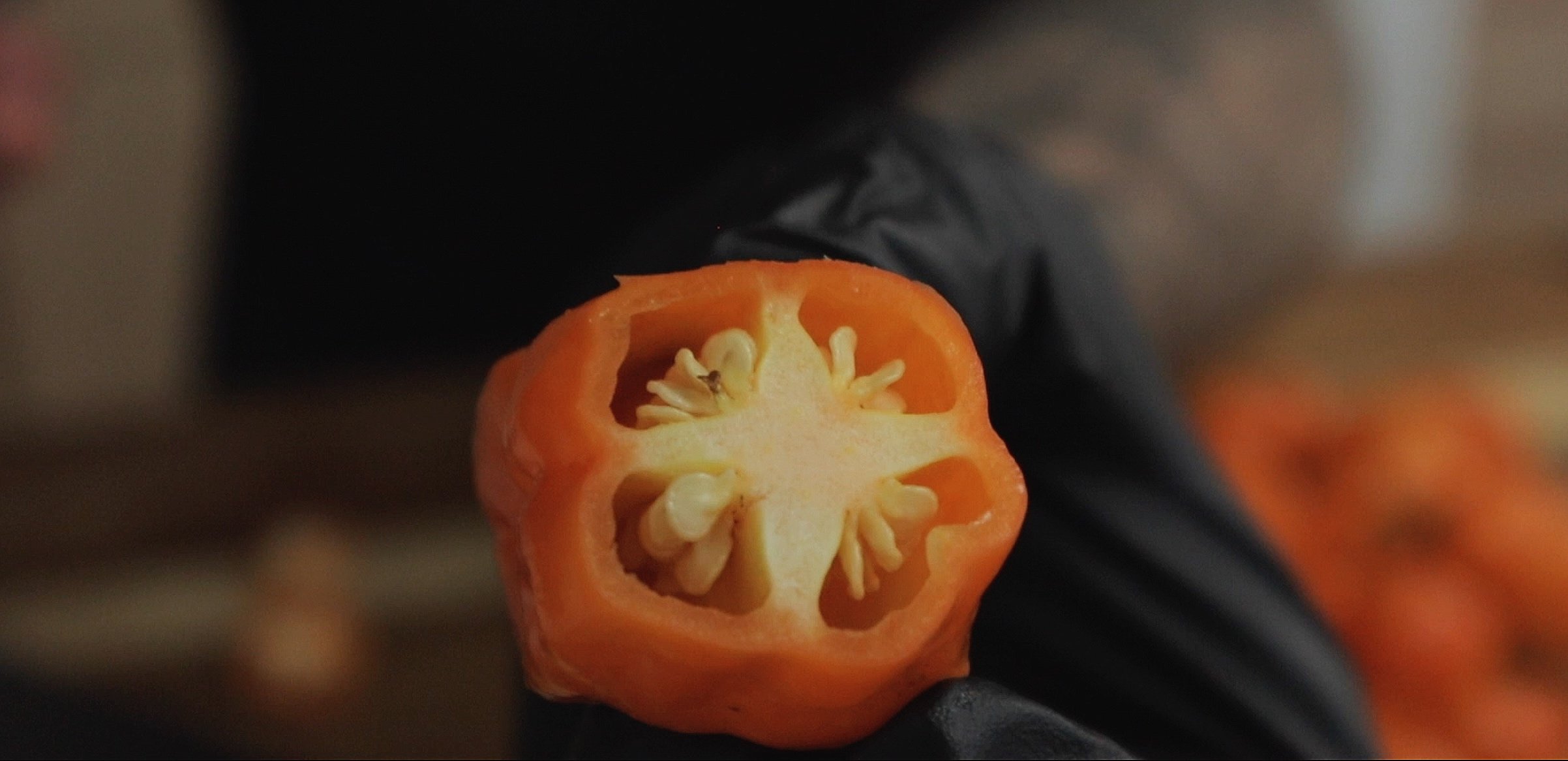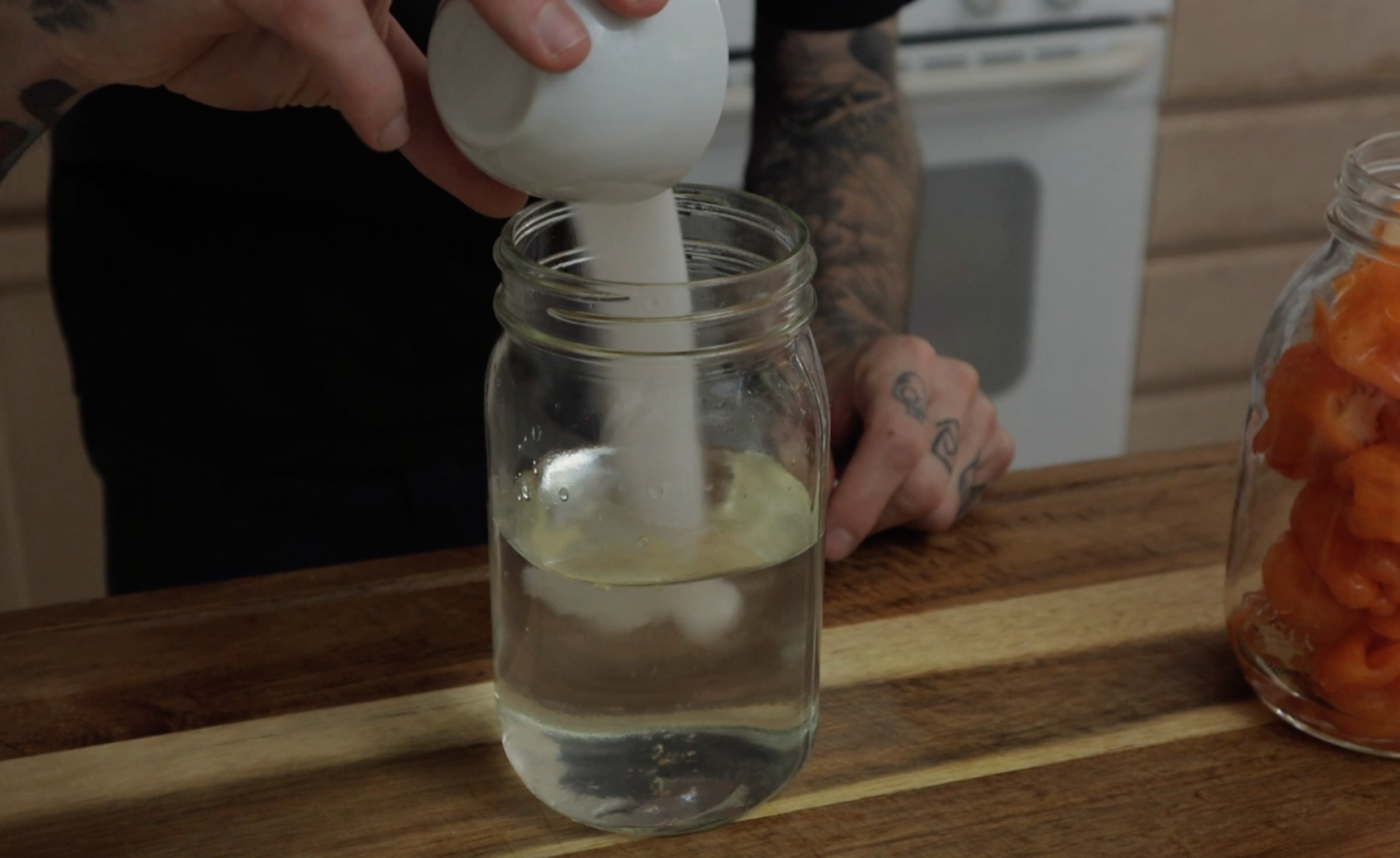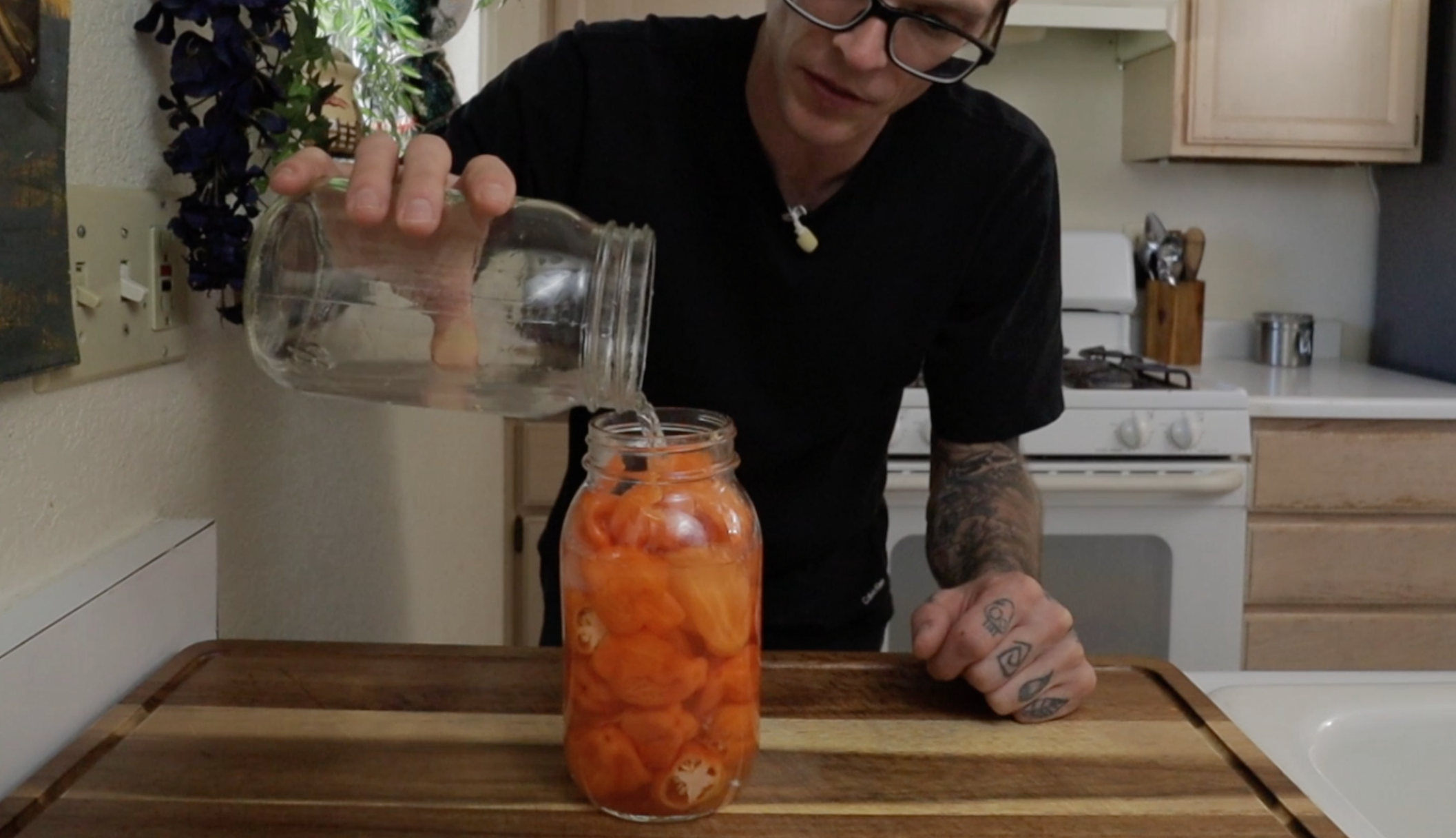Lacto Fermented Habaneros, The Easy Way
Lacto fermented habanero peppers have such a unique flavor. The fermentation process really brings out the natural flavor that the peppers have and is really a great start to making some hot sauce. Of course you can use them as a side garnish, chopped up and put on a sandwich or salad.
Ingredients:
25 washed habaneros, stems removed
1 -2 drops fresh squeezed lemon juice (optional)
Filtered water, or bottled spring water
Fine sea salt
Tools needed:
2 cleaned and sanitized mason jars, pint size with lid
Digital scale that weighs in grams
Sharp knife
Cutting board
Rubber gloves
Glass weight
How to make it:
First off: everything has to be clean and sanitized when lacto fermenting. Your hands, tools…everything. Hot soapy water is acceptable. The peppers can be washed under cold running water, then air dried before fermenting.
Secondly: Kahm yeast or a pellicle may form after day 5 on the surface of the brine. This is perfectly normal and is fine to keep fermenting. I scrape it off right before I make the sauce, but keep it on during the fermentation process. It acts as a natural protective barrier. It is safe if you make a sauce with some kahm yeast in it, but it can have an undesired tasted. If you see it from, skim it off the top of the brine and make the sauce.
Note: We are using a 3% brine for the peppers to be lacto fermented in. Process described below.



Pull stems off peppers, inspect seeds. Scrape out and discard seeds that are discolored (brownish). Remember it is the placenta that holds the heat in peppers, not the seeds. Place jar on the scale, zero out. Put peppers in the jar and fill jar up with filtered water to the bottom of the neck of the jar. Add 1-2 drops of lemon juice. The lemon juice helps neutralize chloramine that may be present even in filtered water. This amount of juice is minimal as it is only a drop or 2. Record that weight. You need to calculate how much salt you need for making the 3% brine.
For example: If the peppers and water weigh 782 g, you will need to calculate 3% of that. 782 x .03 = 23.46 g. That is the amount of fine sea salt you need to make the brine. When I get a decimal point, I round up to the nearest whole number. 24 g of fine sea salt is the amount needed to make the brine.




Place a small dish on the scale, zero out. Add salt to the dish until you get the amount of salt you need. In this example, that is 24 g. Rounding up is minimal, 3.069 % would be the percentage.
Carefully cover the opening of the jar with the lid from a mason jar, holding back the peppers and pouring the water out into another mason jar. Pour the salt into the water. Cover jar with lid and shake vigorously to dissolve the salt completely.
Pour the salt water solution into the jar with the peppers. Place that jar onto a glass pie dish or a pyrex baking dish to catch any liquid that may overspill the jar. Carefully place your weight in jar, weighing down the peppers. I found that an empty, clean baby food jar works perfectly for my pint jars. Find any glass jar or ceramic ramekin that fits nicely in the opening of the jar with minimal space on the sides of the weight. I do not recommend using anything plastic or metal to use as a weight. It is important to keep peppers under the brine level. This is an anaerobic environment, meaning no oxygen. Any pepper allowed to touch the air, it will most likely mold. Good practice is to discard the project and start over. It’s not work taking the risk.
Find a spot in your house that stays consistently 68-75 degrees f. I found that my pantry stays that temperature no matter what time of day or what season I am in. Allow the peppers to ferment for a time frame of 7 days to 30 days or even longer. That all depends on personal taste. Also, I check the pH of the brine at day 7, it should be less than 4.6. At the end of the fermentation period, it should be around 3.5-3.8. If the pH is too high after day 7, say over 4.6, something most likely went wrong. There is a possibility that bad bacteria growth has occurred and the peppers are no longer safe to consume in my opinion.
My favorite way to use these peppers is making a hot sauce with them. Check out this incredible hot sauce using these fermented habaneros.
Enjoy
Logan
